Some butterflies exhibit incredible wing patterns—some to attract mates, others to mimic different creatures for protection. The owl butterfly (Caligo memnon) is one such fascinating species. Named for the large eye-like patterns on its wings resembling an owl's eyes, this butterfly gains effective defense against predators. In this article from EcologíaVerde, we explore the owl butterfly’s unique features, behavior, habitat, diet, and reproduction, providing a comprehensive understanding of this remarkable insect.
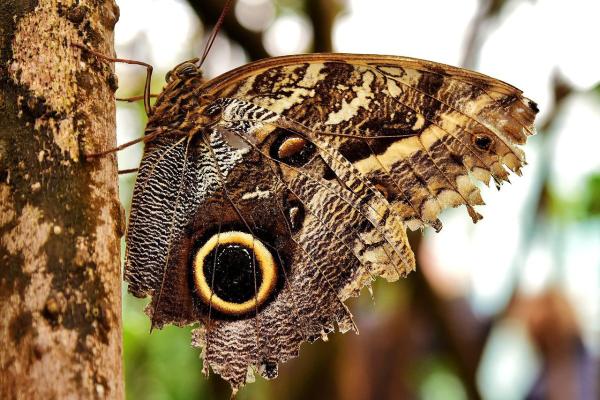
Characteristics of the Owl Butterfly
Behavior and Activity
Habitat of the Owl Butterfly
Feeding Habits
Reproduction and Life Cycle
Also known as the giant owl butterfly, Caligo memnon is notable for its large size, measuring between 11 and 15 centimeters in length—uncommon among most butterfly species. It has two pairs of wings that remain closed when resting, a slender body, and reduced forelegs that make it appear to have only four legs. Its antennae aid in environmental perception, while its compound eyes process multiple images simultaneously.
The wings are primarily brown, ranging from deep blackish to lighter shades, with unique patterns on each individual. The hallmark feature is the large “owl eye” spots on the hindwings—black circles surrounded by yellow rings—that serve as a defense mechanism by mimicking the eyes of a nocturnal predator, helping to deter attackers during its twilight flights.
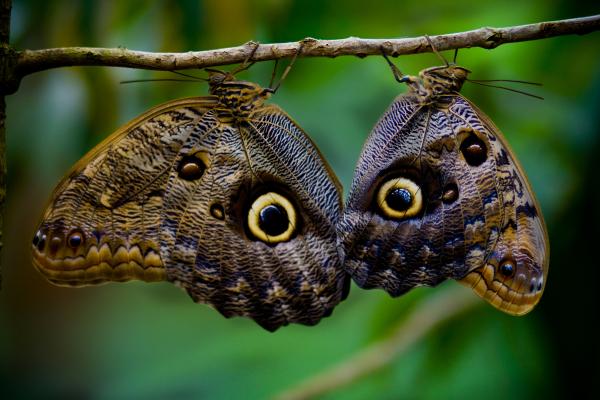
Owl butterflies are crepuscular, meaning they are most active during dusk and dawn, which often leads to confusion with actual owls. They do not fit neatly into diurnal or nocturnal categories, showing unique adaptations for survival during low-light periods.
Native to the Americas, the owl butterfly’s range extends from Mexico through Central America to the Amazon basin. They prefer warm, humid climates, typically residing around 1400 meters elevation, especially on the Pacific slopes, but can also be found on the Atlantic side. Common habitats include riverbanks, coffee plantations, forest edges, and paths, usually avoiding the dense interior of rainforests.
Remarkably, they can withstand the intense dry seasons in areas like Guanacaste, Costa Rica, and survive in agricultural regions. Their larval host plants mainly include species from the Heliconia and Musa (banana) genera.
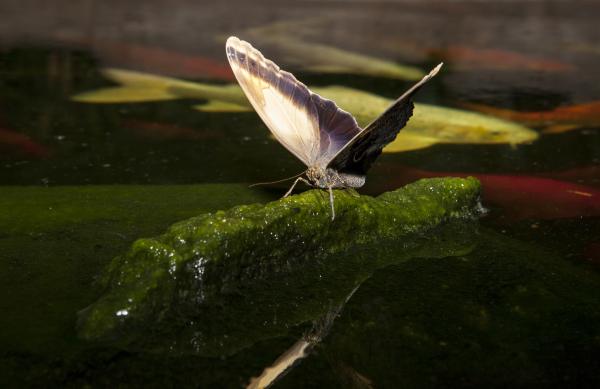
The larval stage is when the owl butterfly feeds actively, consuming host plants such as Musa (banana) and Heliconia. Larvae often gather in groups and can become pests in banana plantations and ornamental gardens.
Adult owl butterflies feed primarily on ripe or fermenting fruit, using their long, coiled proboscis to suck up juices. Their feeding activity aligns with their crepuscular behavior, mostly occurring during twilight hours.
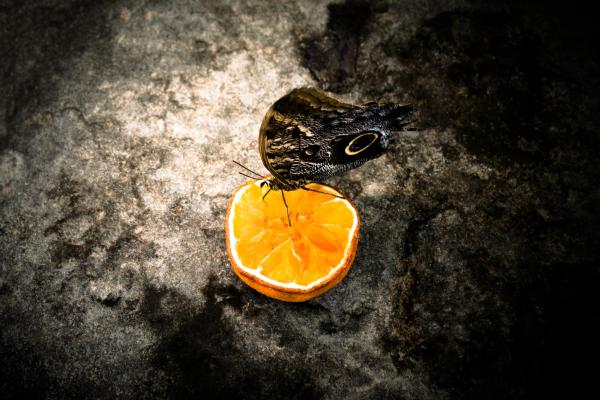
Owl butterflies engage in courtship flights before mating, with males fertilizing females through internal fertilization. Females lay eggs that hatch in about 10 days into yellow larvae with brown stripes and spiny hair-like projections on their heads. The larvae grow rapidly to about 10 centimeters through five developmental stages before pupating.
The pupal stage lasts around 15 to 22 days, during which the transformation into adult butterflies occurs. The adult butterfly’s lifespan is roughly four weeks, completing its lifecycle.
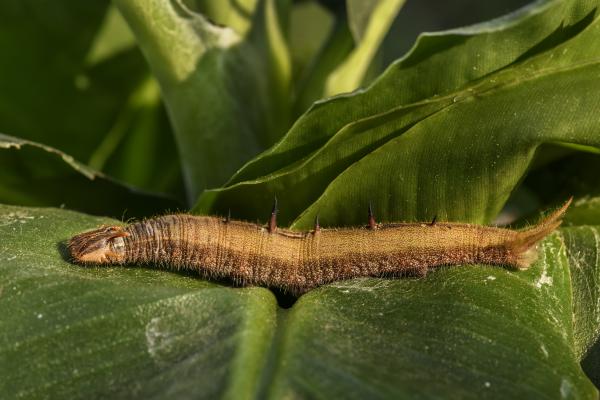
For more fascinating insights into butterflies and their biology, explore our related articles such as Types of Butterflies and What is Metamorphosis?
Bibliography
Costa Rica Entomological Supply (n.d.) Caligo memnon. Available from: http://www.butterflyfarm.co.cr/species/caligo-memnon
Terreros, L. (2005). Description of the life cycle of Caligo memnon in captivity at Xcaret Ecoarchaeological Park, Quintana Roo. Available from: http://132.248.9.195/pd2005/0602193/0602193.pdf
animal tags: Owl Butterfly
We created this article in conjunction with AI technology, then made sure it was fact-checked and edited by a Animals Top editor.